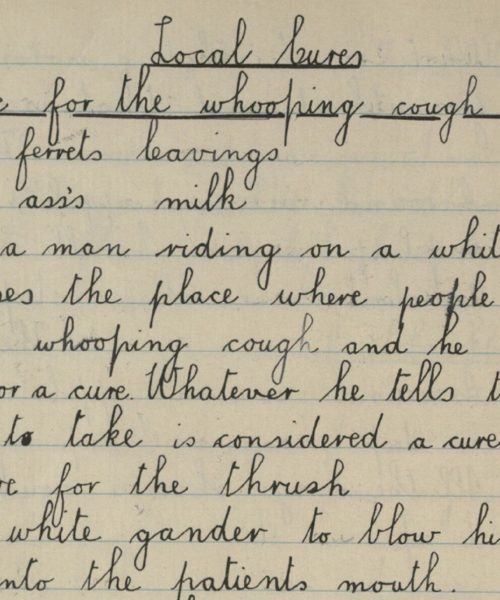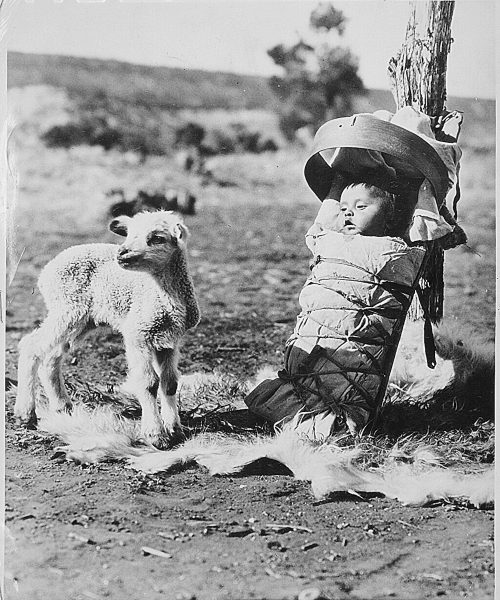If you’ve never experienced low back pain, just wait. Up to 80 percent of us end up suffering it at some point during our lifetimes.
In fact, lumbar pain is the second most common reason people visit a doctor behind colds and flu, making low back stretches and exercises as valuable in keeping us healthy as hand washing and vaccination. But their goals aren’t limited only to flexibility.
“Sometimes people can be a little fearful of using their low back, but we do have muscles there,” says Patrick Suarez, OCS, SCS, a physical therapist based in Albany, New York. “And just like any other muscle, if I’m going to work on my biceps I’m going to do exercises that use resistance for those biceps. We should be doing the same for our low back, as well.”
Whether you’re in the privileged 20 percent or you’re laying on the floor in pain right now, there are movements that can help prevent or alleviate much of the discomfort associated with low back insufficiency. Suarez has identified five of the best below.
Why is low back pain so common?
Modern living has given us so much—but it’s taken, too, chiefly in the form of an often sedentary lifestyle that discourages us from moving. Desk jobs, car commutes, and Netflix sloth-athons can promote inactivity that, over the long term, atrophies muscles and stiffens the connective tissues around joints.
“Sitting gets a bad rap because it’s just what people do all day, but even if you stood instead, you would still want to move,” Suarez says. “So our philosophy is, if you’re sitting for a little while, get up and stand. If you’re standing for a little while, sit down a little bit.”
Additionally, as Suarez mentioned earlier, many of us are afraid to place stress on our low backs, leading to weakness in the muscles that support the spine.
“Sometimes we just aren’t challenging the muscles in our back enough throughout our everyday life,” he says. “Then when we do, it can trigger spasms.”
Assuming you don’t have a more serious bone or disc issue, oftentimes chronic, or recurrent, low back pain reveals broader insufficiencies.
“There may be deficits above and below the low back that accumulate and can lead to back spasms,” Suarez adds. “So we actually look a little bit more at hip mobility for back pain than back mobility.”
Why stretching for low back pain alone isn’t enough
Along with low back and hip mobility stretches, Suarez recommends including strengthening exercises as well.
“The muscles that help you bend forward or back or rotate are generally bigger power muscles,” he says. “But when those are trying to help you stabilize, they can tighten and prevent some of that movement [in an effort] to protect the back. A lot of times we’ll see that, when our stabilizing muscles aren’t doing their job because we haven’t been challenging them.”
Strength exercises are designed to reach those stabilizing muscles, so they’re not outsourcing their jobs to the power movers, which can become overtaxed, leading to pain and spasms.
5 low back movements to help ease and prevent pain
Back mobility is a full-core affair, requiring 360-degree strength and flexibility.
“We break up the core between front back and then side to side, and there’s research that shows if you have a proper ratio of strength across those, you’re less likely to have a back injury,” Suarez says. “You can never prevent all injuries, but you can reduce your chances of having back injuries by building this kind of stability all the way around.”
The following five stretches and exercises should help you do just that.
1. Cobra to child’s pose
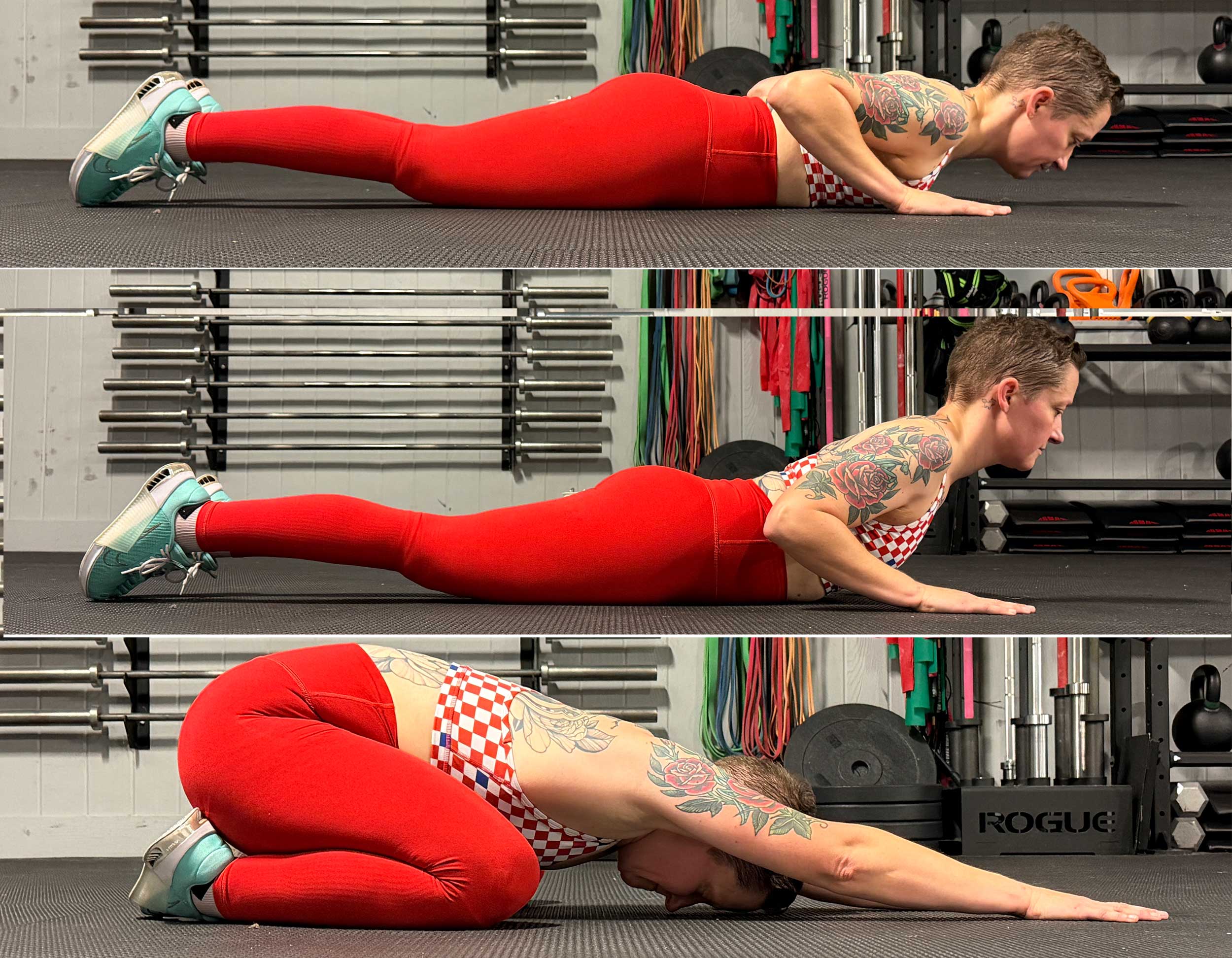
This combination move takes your low back through extension and flexion, helping promote full-range mobility.
- Lie on your stomach with your legs extended behind you, the tops of your feet on the floor, and your hands on the floor beneath your shoulders.
- Keeping your core (front and back) engaged, push through your palms to lift your chest off the floor.
- Pause, and return to the starting position.
- Pushing up and back through your hands, bend your knees and sit back on your heels. Your arms should remain outstretched in front of you.
- Plant your palms and straighten your knees to return to the starting position.
2. Side lying rotation
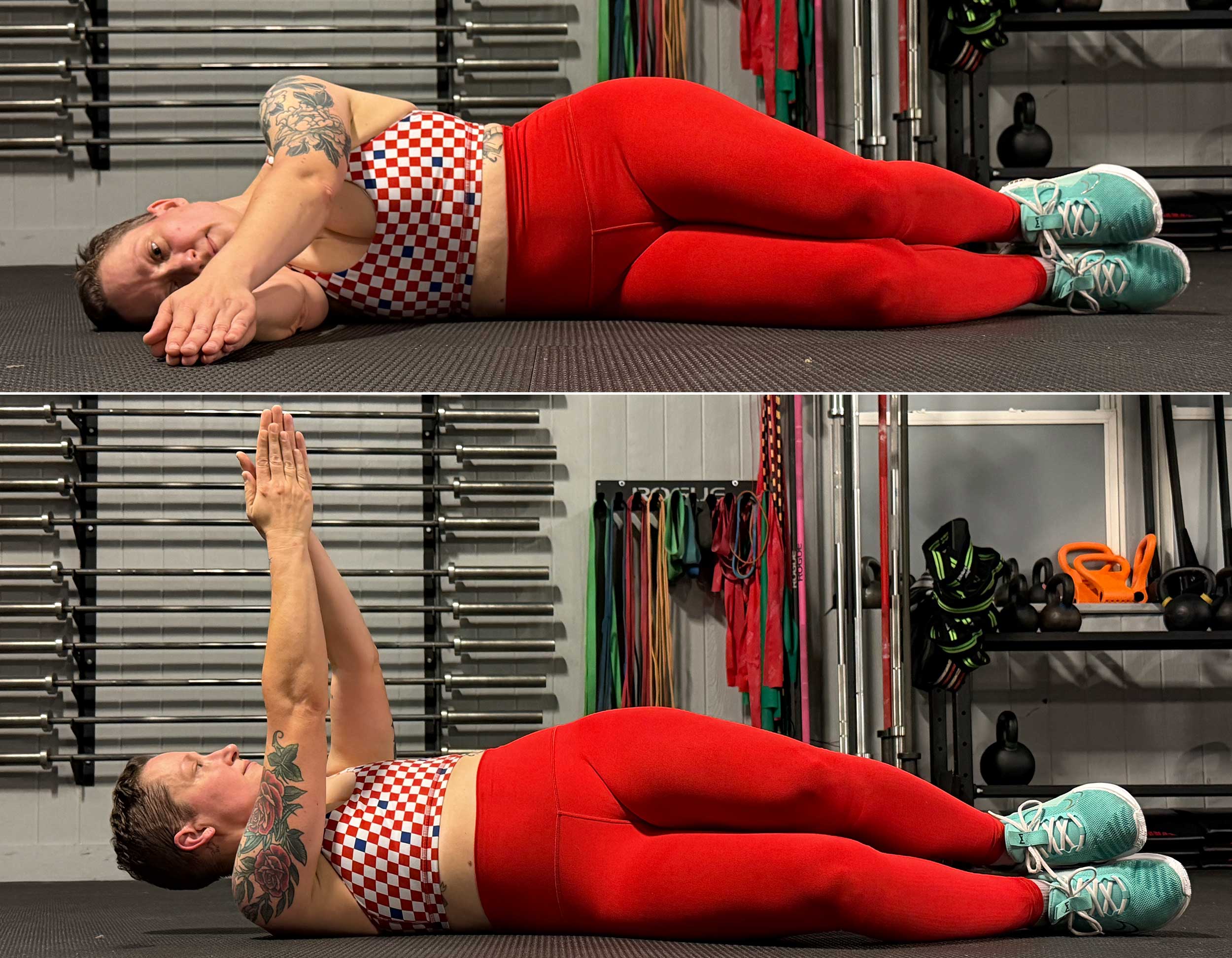
Gentle twisting movements like this one help forge and maintain rotational mobility in the lumbar spine.
- Lie on your right side, with your hips and ankles stacked on top of one another, and bend your knees while keeping your heels in line with your spine. Extend your right arm on the floor to your right.
- Bring your left palm over to your right palm and then slowly drag it down your right arm and across your chest as you rotate your upper body to the left.
- Continue rotating until you feel your left knee start to lift. Hold for five seconds. Options: extend your left arm out to your left and/or use your right hand to hold down your left knee.
- Return to the starting position, performing an equal number of stretches on both sides.
3. Deep Squat
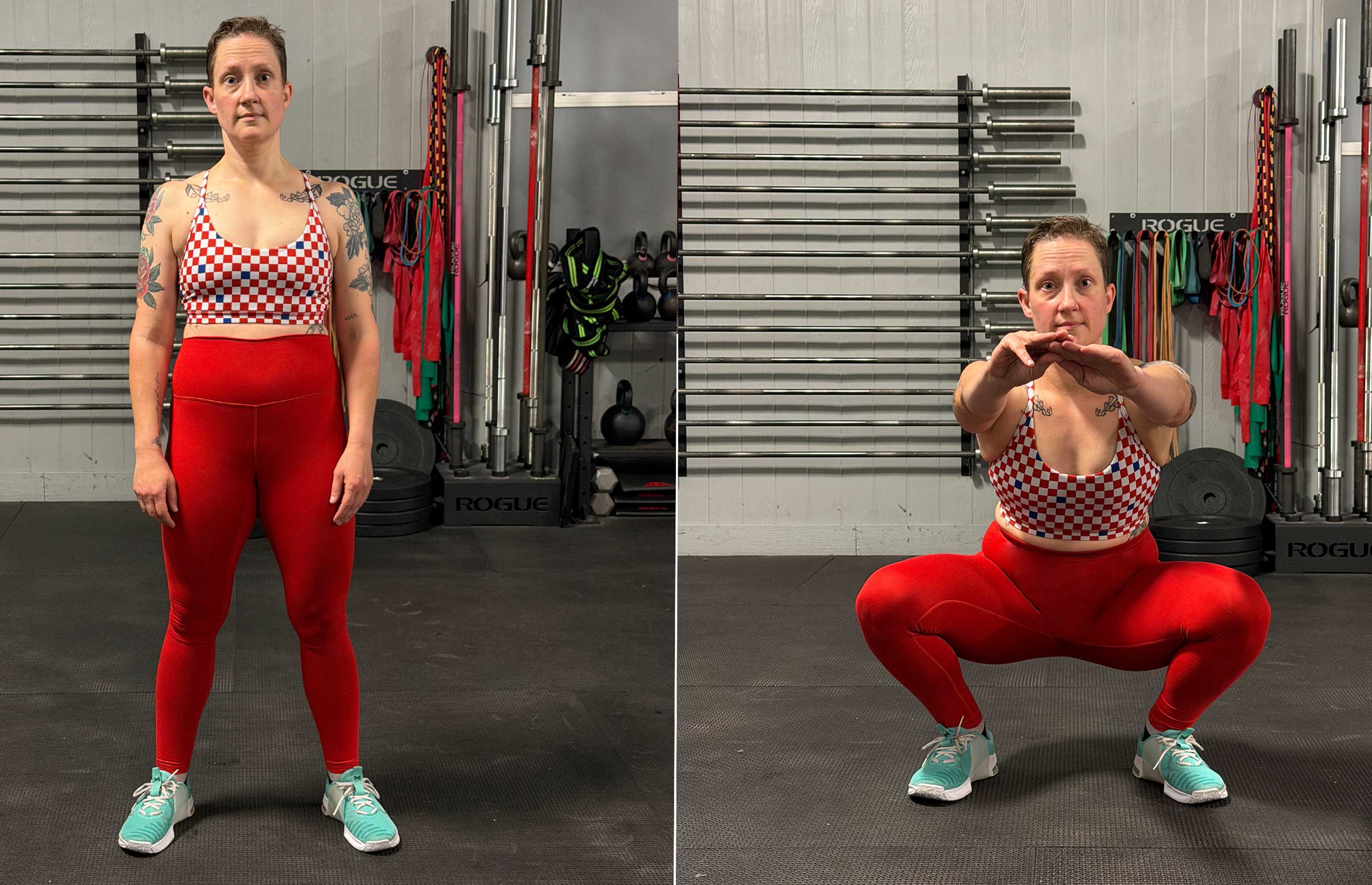
Squatting to full depth helps load (i.e. exert stimulus on) and activate the back while promoting range of motion in the ankles, knees and hips.
- Stand tall with your feet parallel and about hip-width apart.
- Using your outstretched arms or grabbing a stable object (table, rail, etc.) for balance, send your hips back, bend your knees and lower your body as far as you can, keeping your heels on the floor.
- Pause at the bottom of the movement and, again keeping your core engaged, push through your heels to return to the starting position.
4. Roll down
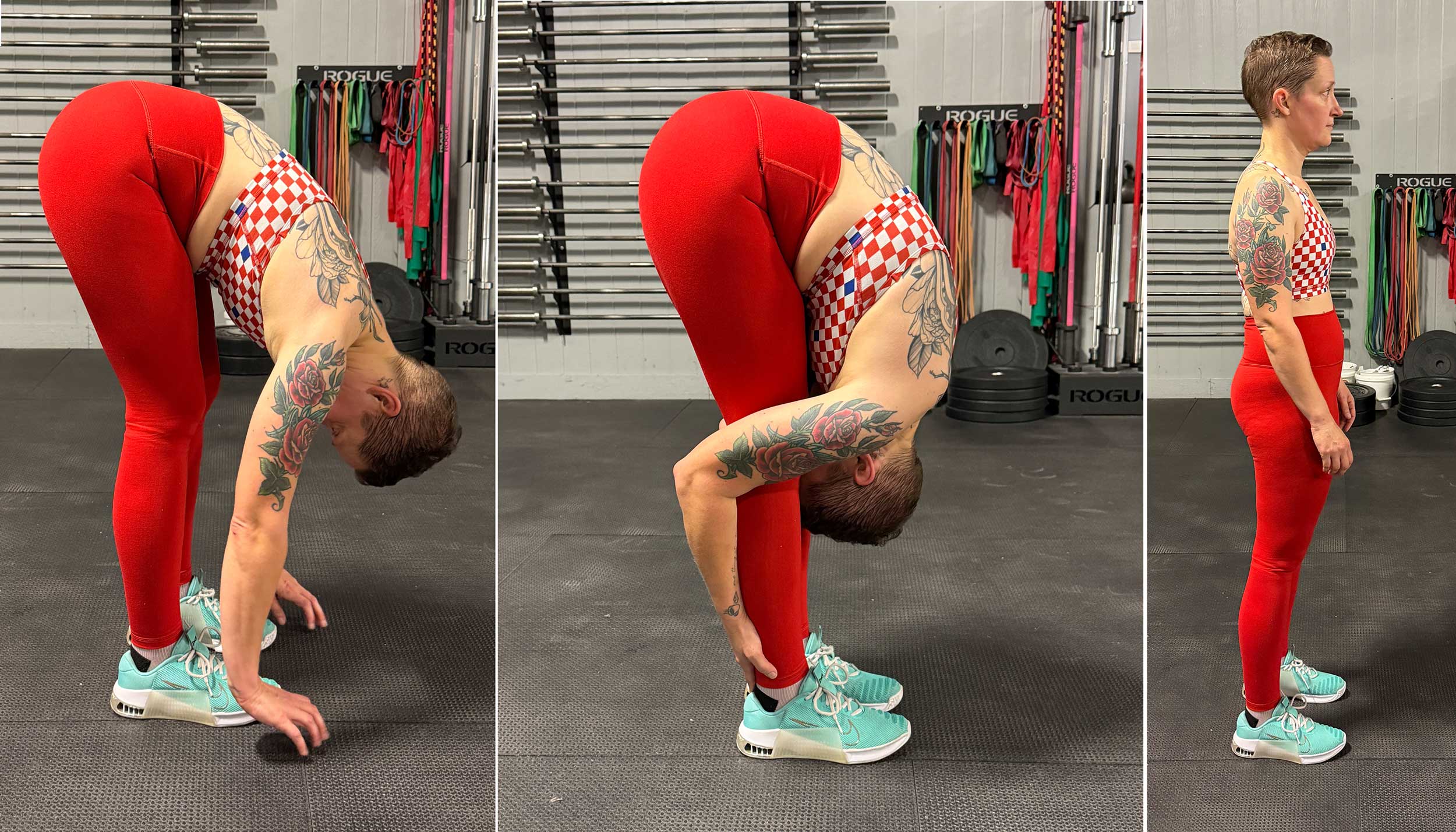
Full-range spinal flexion and core strength are the emphases of this standing movement, to which you can add light weight for additional loading of the muscles supporting the spine.
- Stand with your feet hip-width apart and your arms at your sides. Option: Stand with your back against a wall to prevent backward motion.
- Slowly lower your chin toward your chest and continue rolling your upper, thoracic and lower spine forward, vertebra by vertebra, curling over as deeply as you comfortably can.
- Again taking a slow, deliberate approach, reverse the movement, gradually rolling your spine upward to standing.
5. Wall hinge
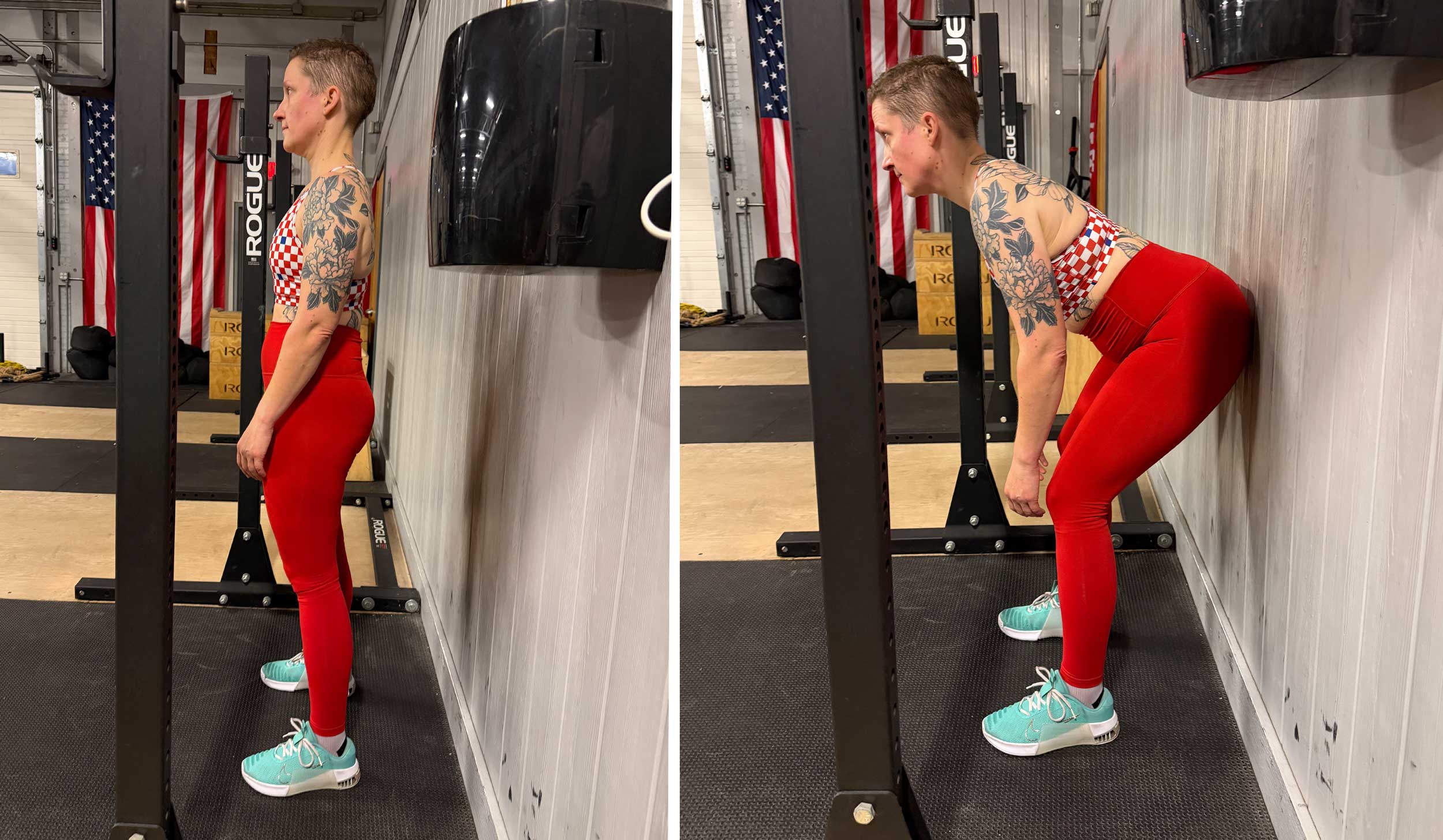
Hinging exercises train us to use our hips and glutes instead of the muscles of the low back.
- Stand 6-8 inches away from a wall, facing forward with your feet hip-width apart.
- Keeping your chest up and your core engaged, send your hips backward until your butt touches the wall. (Do not descend into a squat.)
- Engage your glutes to bring your hips back to the starting position.



